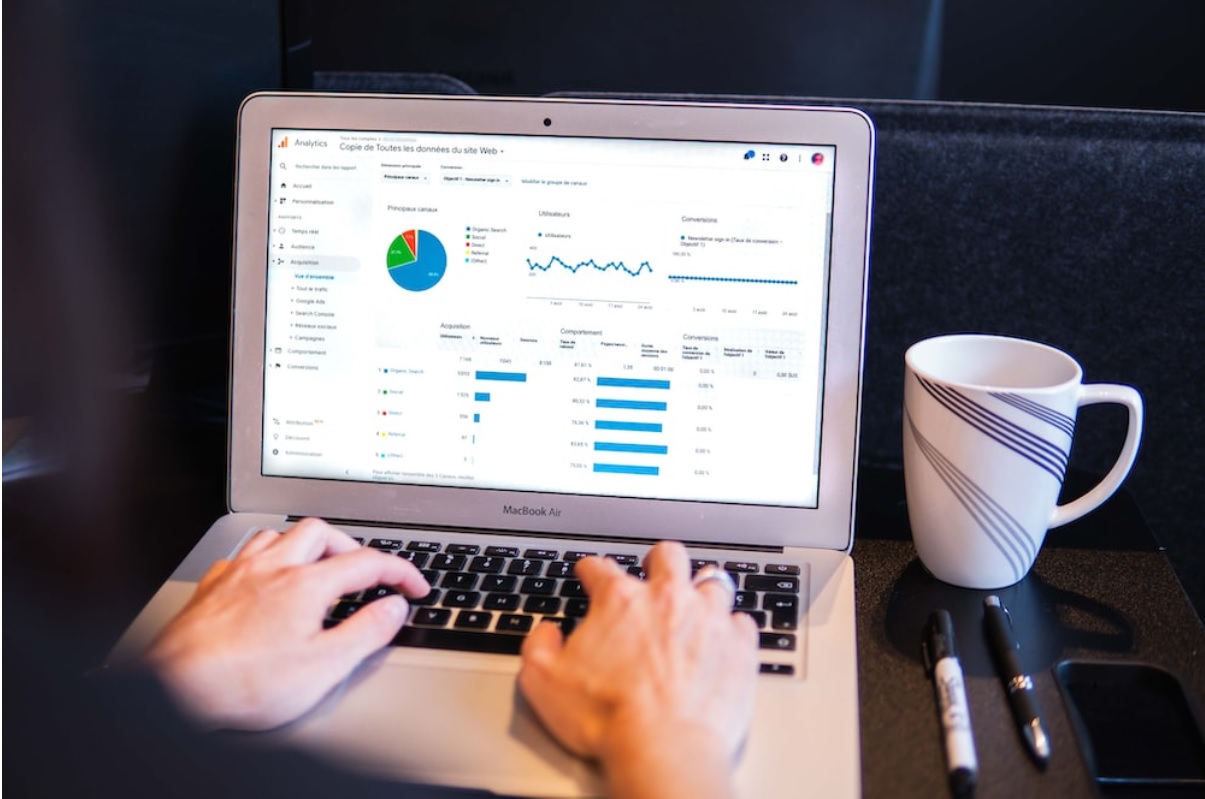Buyer personas are fictional, generalized representations of your ideal customers, based on good market research and real data about your existing customers. They help you better understand your potential customers (and prospects) and make it easier for you to tailor your content, messaging, product development, and services to the specific needs, behaviors, and concerns of different groups.
In this article, we’ll look at the benefits of building buyer profiles, how to research and create them, common mistakes to avoid, and how to use them to improve your marketing and sales strategies. We’ll also look at examples of businesses that have successfully used a buyer persona , tools and resources that can help you create them, and how to measure success.
Introduction to buyer personas
Buyer personas are detailed profiles of your target customers. They are not based on assumptions or stereotypes, but on real data and research. A buyer persona includes information such as age, gender, income, education, job title, interests, goals, challenges, pain points, buying behavior, etc.
The buyer persona helps you better understand your target audience, and makes it easier for you to create targeted marketing campaigns and sales strategies that match them. By understanding what motivates your potential targets, what is important to them and what is problematic for them, you can put in place a content strategy (messages) that speak directly to them. The same goes for developing products and services that best meet their needs.
The Benefits of Creating Buyer Personas
The creation of buyer profiles offers tools to increase your sales , and has several advantages:
1. Better understanding of your customers
The buyer persona helps you better understand your target market. By identifying the struggles, motivations, and goals of your future new customers, you can create messages and content that are relevant to them. This can help you build stronger relationships with your customers and increase their loyalty to your brand.
2. More targeted marketing campaigns
By understanding your customers’ needs and preferences, you can create more targeted marketing campaigns that speak directly to them. This can help you increase your conversion rates and generate more qualified leads.
3. Improved product development
By understanding the pain points and needs of your customers, you can develop products and services that meet the specific needs of your target customers. This can help you create a competitive advantage and increase the satisfaction and loyalty of your target customers.
4. More effective sales strategies
By understanding the buying behavior and preferences of your current customers, you can develop more effective sales strategies. This can help you close more deals and increase your revenue.
How to Research and Create Buyer Profiles (Buyer Personas)
Developing your ideal customer profile requires research and data analysis. Here are the steps to follow:
1. Identify your customer segments
The first step in building buyer personas is to segment your target market. It’s about grouping your customers based on common characteristics such as: age, gender, income, education, function, interests, etc.
2. Conduct research
Once you have identified your customer segments, you need to conduct research to gather data about them. These can include surveys, interviews, focus groups and online research.
3. Analyze the data
Once you have collected the data, you need to analyze it to identify patterns and trends. This will help you identify common pain points, goals, and motivations among your clients.
4. Create the personas
Based on your research and data analysis, you can create your buyer personas. Each persona should contain information such as age, gender, income, education, job title, interests, goals, challenges, pain points, shopping behavior, etc.
Common mistakes to avoid when creating buyer personas
There are several common mistakes to avoid when creating buyer personas:
1. Rely on assumptions
One of the biggest mistakes companies make when creating buyer personas is relying on assumptions instead of data. Assumptions can lead to inaccurate personas, which can result in ineffective marketing campaigns and sales strategies.
2. Create too many personas
Creating too many personas can be overwhelming and confusing. It’s best to focus on a few key, relevant personas that represent your main customer segments.
3. Focus only on demographics
Demographics are important, but they don’t tell the whole story. It is important to also take into account the objectives, problems, motivations and buying behavior of your target marketer.
4. Not updating personas regularly
Buyer profiles should be updated regularly to reflect changes in your customers’ needs and preferences. Failure to update personas can lead to ineffective marketing campaigns and sales strategies.
Use buyer personas to improve your marketing strategy
Once you’ve created your buyer profiles, you can use them to maximize your marketing efforts and improve your prospecting strategy. Here are a few tips :
1. Tailor your message
Use your buyer profiles to create messages that speak directly to your different targets. This can help you increase engagement, conversion, and retention rates.
2. Create targeted content
Use your buyer profiles to create content that addresses the pain points and interests of your different targets. This can help you attract more qualified leads, identify targets, and build customer loyalty.
3. Choose the right channels
Use your buyer profiles to identify the most effective channels for reaching your ideal customers. This can help you maximize the return on investment of your communication strategy.
4. Optimize your website
Use your buyer profiles to optimize your website for your ideal customers. This can help you increase engagement, conversion rates, and loyalty of targeted customers.
How to use buyer personas in your sales process
Buyer personas can also be used to improve your sales and web marketing process. Here are a few tips :
1. Identify your customers’ pain points
Use your buyer profiles to identify your customers’ pain points. This can help you tailor your sales pitch to meet their specific needs and concerns.
2. Personalize your sales pitch
Use your buyer profiles to tailor your sales pitch to each customer. This will increase your chances of closing the deal.
3. Use the right tone
Use your buyer profiles to identify the tone that resonates best with your ideal customers. This can help you build rapport and trust with them, and maintain a good customer relationship.
4. Dealing with objections proactively
Use your buyer profiles to anticipate objections and respond proactively. It can help you overcome objections and close more deals.
Examples of Companies that Successfully Use Buyer Profiles
Here are some examples of companies that have successfully used buyer personas:
1.Hubspot
Hubspot uses buyer personas to create targeted content and marketing campaigns. There are several buyer personas, including “Marketing Mary” and “Sales Sam”.
2.Airbnb
Airbnb uses buyer personas to tailor messaging and product development to different customer segments. There are several buyer personas, including “Wanderlust Wendy” and “Family Fred”.
3. Coca-Cola
Coca-Cola uses shopper profiles to create targeted marketing campaigns and marketing strategies. There are several types of marketing personas, including “Teenage Tessa” and “Busy Mom Brooke.”
Measure the success of your buyer personas
It’s important to measure the success of your buyer profiles to make sure they’re effective. Here are some indicators to consider:
1. Commitment
Measure the engagement and behavioral rates of your marketing campaigns. Same as those in your content to see if they resonate with your ideal customers.
2. Conversion rate
Measure conversion rates to check the effectiveness of your marketing and sales strategies.
3. Customer satisfaction
Measure customer satisfaction on your website to find out if your products and services meet their needs.
4. Repetition of the activity
Measure customer loyalty to find out if they are loyal to your brand.
Tools and Resources for Building Buyer Personas
Here are some tools and resources that can help you create buyer profiles:
1. Hubspot Persona Generator
Hubspot Persona Generator is a free tool that can help you create buyer personas from your existing customer data and segmentation criteria.
2. Xtensio Persona Creator
Xtensio Persona Creator is a paid tool that can help you create detailed buyer personas based on research and data analysis.
3.Google Analytics
Google Analytics is one of the search engines that can provide valuable data about your customers, including demographics, interests, and behaviors. To do this, you just have to choose your target, establish a standard profile, and apply your communication plan.
4.SurveyMonkey
SurveyMonkey is a free tool that can help you conduct surveys to collect data about your customers.
Conclusion
Buyer profiles are a powerful tool for understanding your customers, improving your marketing or sales strategies, and achieving your goals. By creating detailed profiles of your ideal customers, you can target their needs, tailor your messaging, content, and product development to meet their specific expectations and preferences. Remember to avoid common mistakes, use your personas to improve your business strategy, and regularly measure its success. With the right tools and resources, you can create effective buyer profiles that will boost your sales and help you build stronger relationships with your customers.
FAQs titleQ1. What is a buyer persona and why is it important for businesses?
Q2. How to create a buyer persona?
How to use buyer personas to improve your marketing strategy?
How to integrate buyer personas into your sales process?
How to update your buyer personas?











